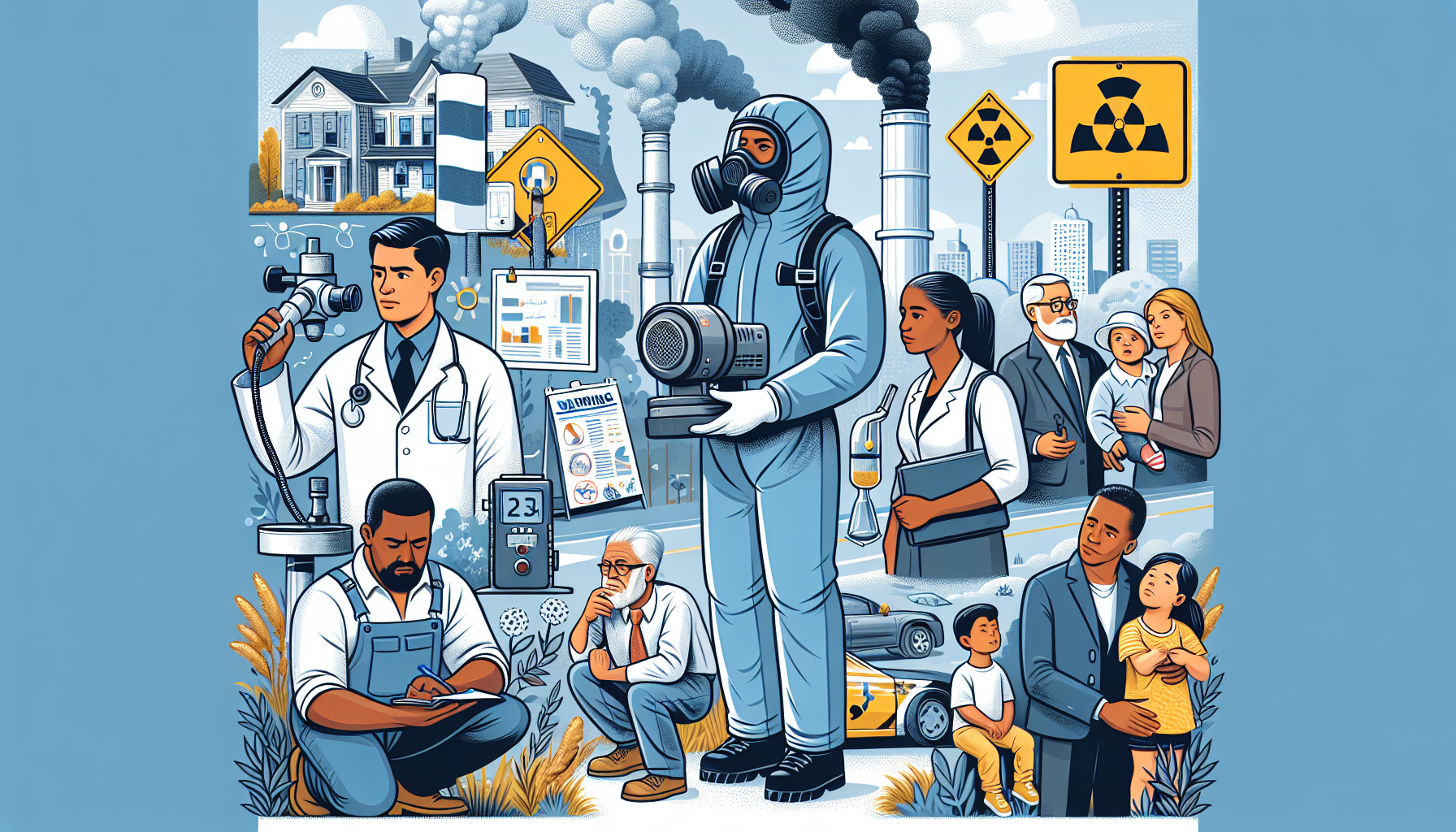Definition
Environmental Hazards Monitoring in the context of VA benefits refers to the process of observing and evaluating potential environmental hazards that may impact the health and well-being of veterans. This includes identifying exposure to toxic substances, chemicals, radiation, or other harmful materials during military service. By monitoring these hazards, the VA can better address related health concerns and offer appropriate support, compensation, and care to affected veterans.
Key Takeaways
- Environmental Hazards Monitoring within VA benefits refers to the assessment, surveillance, and management of service-related hazardous exposures that may affect veterans’ health and well-being.
- These hazards include toxic substances, harmful pollutants, and other environmental risks encountered during military service, which can potentially cause long-term health problems or disabilities.
- By monitoring and documenting these hazards, the Department of Veterans Affairs is better equipped to provide health care, compensation, and support services to eligible veterans affected by their exposure to environmental hazards during their service.
Importance
Environmental Hazards Monitoring is an essential aspect of VA benefits as it plays a crucial role in ensuring the health and well-being of veterans.
This term refers to the process of identifying, tracking, and assessing potential environmental hazards that veterans may have been exposed to during their military service, such as toxic chemicals, radiation, and airborne pollutants.
By monitoring these hazards, the Department of Veterans Affairs can provide necessary resources, healthcare, and compensation to eligible veterans affected by such environmental exposures.
Furthermore, this monitoring allows the VA to implement preventative measures and enhance safety protocols to minimize risks for future military personnel.
Overall, Environmental Hazards Monitoring is a vital component of VA benefits in supporting the long-term health and quality of life for veterans and their families.
Explanation
Environmental Hazards Monitoring is an integral component of the VA benefits system, designed to ensure the health, safety, and well-being of veterans who have been exposed to potentially harmful agents and situations during their military service. The purpose of this monitoring system is to identify, assess and evaluate environmental hazards that veterans may have encountered, such as exposure to toxic chemicals, biological agents, and radiation.
By doing so, it helps the Department of Veterans Affairs develop and implement appropriate strategies and services on an individual and collective basis, ensuring that the health-related consequences of these exposures are addressed effectively by providing enhanced medical care and rehabilitative services to affected veterans. This comprehensive monitoring system is used for facilitating medical research on specific hazardous exposures, which aids in understanding the long-term effects of these agents and helps improve prevention strategies.
Moreover, by collecting and analyzing environmental hazard data, Environmental Hazards Monitoring supports the development of corresponding compensation and benefits programs for affected veterans. These benefits programs help ensure that veterans who have been impacted by environmental hazards during their service receive appropriate financial assistance, access to specialized health care, and necessary support resources, ultimately improving their overall quality of life.
In this way, Environmental Hazards Monitoring plays a crucial role in promoting the best interests of veterans and preserving their welfare when dealing with the impacts of hazardous environments encountered in the line of duty.
Examples of Environmental Hazards Monitoring
Environmental Hazards Monitoring in the context of VA Benefits refers to the process of identifying and tracking potential environmental hazards that may pose a risk to the health and well-being of veterans. This is specifically concerning veterans during their service in the military or those involved in VA medical facilities and residential settings. Here are three real-world examples of Environmental Hazards Monitoring related to VA Benefits:
Camp Lejeune Water Contamination (1953-1987): At the Marine Corps Base in Camp Lejeune, North Carolina, it was discovered that the drinking water was contaminated with chemicals like benzene, trichloroethylene, and vinyl chloride. This contamination exposed thousands of military personnel and their families to hazardous substances that could lead to various illnesses. The VA closely monitors any related health issues among the affected veterans, providing them benefits and access to necessary healthcare resources.
Ionizing Radiation Exposure Monitoring: Military personnel involved in nuclear weapons testing or working in nuclear facilities might have been exposed to varying degrees of ionizing radiation, which may lead to potential long-term health concerns such as cancer. The VA monitors and tracks veterans who have been exposed to ionizing radiation during their military service and helps provide necessary benefits, compensation, and health care related to their radiation exposure.
Burn Pit Exposure in Iraq and Afghanistan Wars: During the Iraq and Afghanistan wars, open-air burn pits were used to dispose of waste materials at military bases, releasing potentially hazardous substances into the air. These burn pits may have contributed to various respiratory and other health issues among veterans who served near such locations. VA Benefits is actively monitoring and identifying veterans who may have been exposed to these burn pits, providing them with appropriate benefits, and researching the long-term health effects of exposure to guide further assistance.
FAQ: VA Benefits for Environmental Hazards Monitoring
What is Environmental Hazards Monitoring?
Environmental Hazards Monitoring involves the identification, assessment, and management of hazards that may pose a risk to the health and wellbeing of military personnel and veterans. These hazards may include exposure to toxic chemicals, radiation, and other harmful substances both during and after their service.
How does the VA address Environmental Hazards Monitoring?
The Department of Veterans Affairs (VA) is committed to providing support and assistance to veterans who have been exposed to environmental hazards during their military service. The VA conducts research, provides medical care, and offers disability compensation to those who have been affected by toxic exposures.
What benefits are available for veterans affected by environmental hazards?
Veterans affected by environmental hazards may be eligible for various benefits, including health care services, disability compensation, and other support programs provided by the VA. These benefits depend on the nature of the hazard and its impact on the individual’s health.
How can I find out if I have been exposed to any environmental hazards during my service?
If you suspect that you have been exposed to any environmental hazards during your military service, you should discuss your concerns with your healthcare provider and submit a request for a comprehensive health evaluation through the VA. Additionally, you can review the list of toxic exposure incidents on the VA’s website to see if you were stationed in a known affected area.
How do I apply for benefits related to Environmental Hazards Monitoring?
To apply for benefits related to Environmental Hazards Monitoring, you will need to submit a claim with the VA. This can be done online through the VA’s eBenefits website or in-person at your local VA Regional Office. You will need to provide documentation on your military service, medical records, and any evidence showing a connection between your exposure and your current health condition.
Related VA Benefit Terms
- Air Quality Testing
- Contaminant Exposure Assessment
- Environmental Health Tracking
- Soil and Water Sampling
- Hazardous Waste Management
Sources for More Information
- U.S. Department of Veterans Affairs: Public Health
- U.S. Environmental Protection Agency (EPA)
- Agency for Toxic Substances and Disease Registry (ATSDR)
- Centers for Disease Control and Prevention (CDC)
 Benefits.com Advisors
Benefits.com Advisors
With expertise spanning local, state, and federal benefit programs, our team is dedicated to guiding individuals towards the perfect program tailored to their unique circumstances.
Rise to the top with Peak Benefits!
Join our Peak Benefits Newsletter for the latest news, resources, and offers on all things government benefits.


















